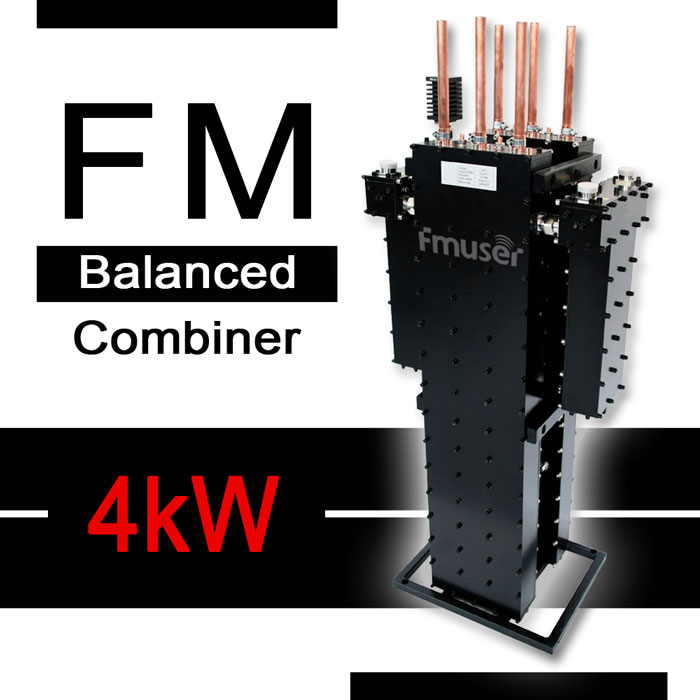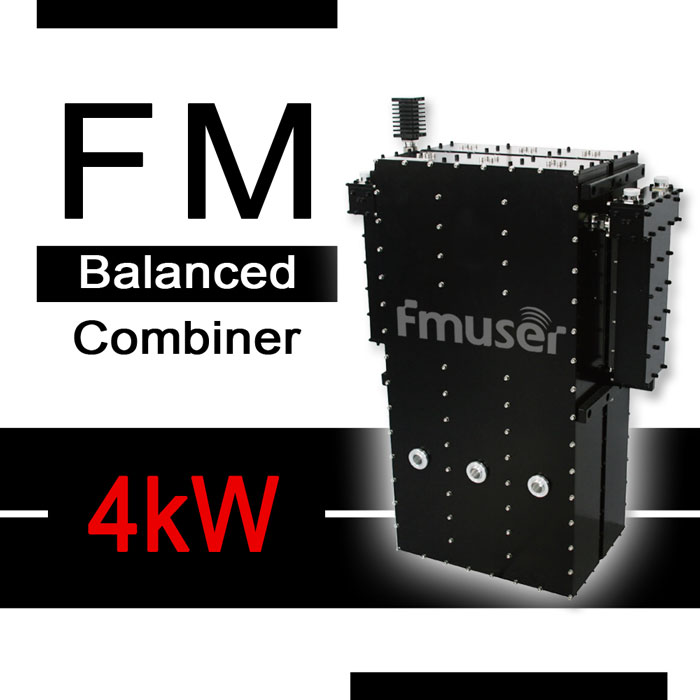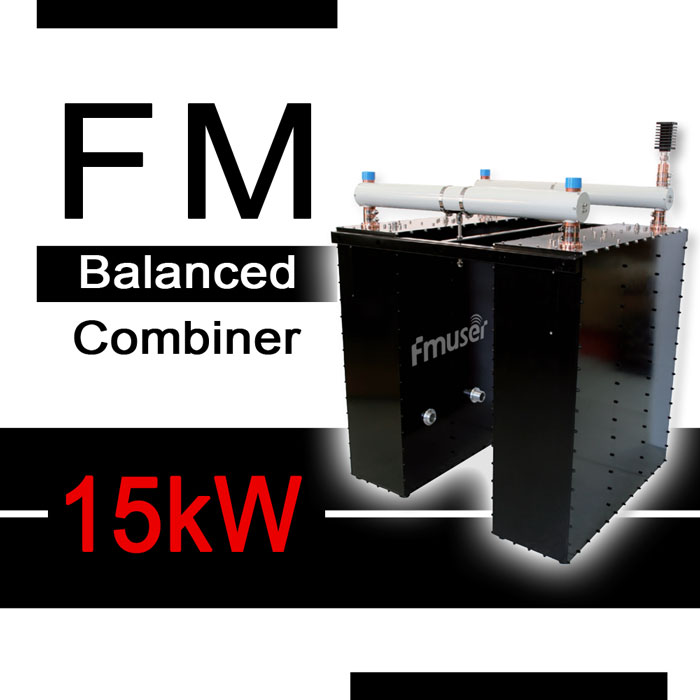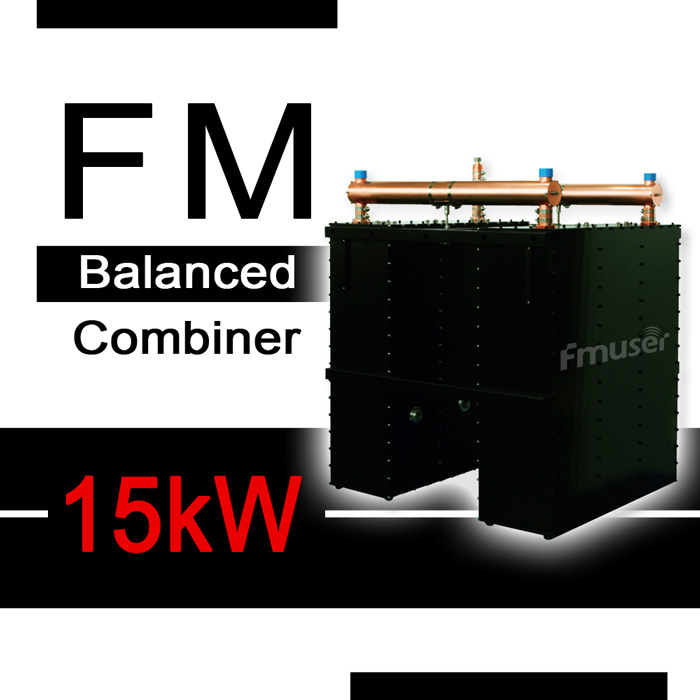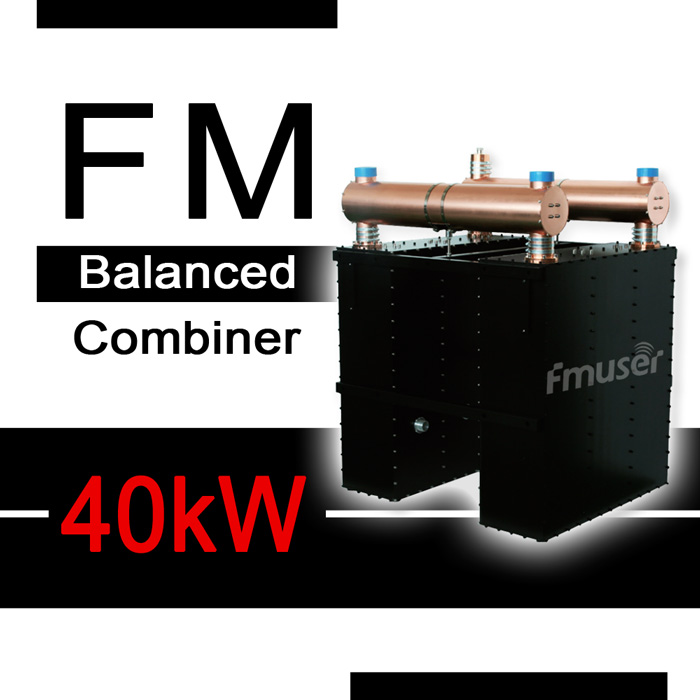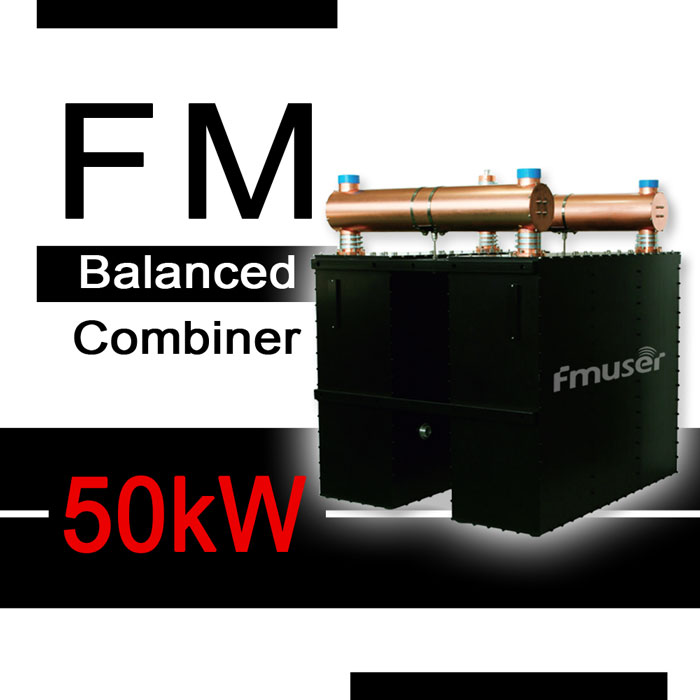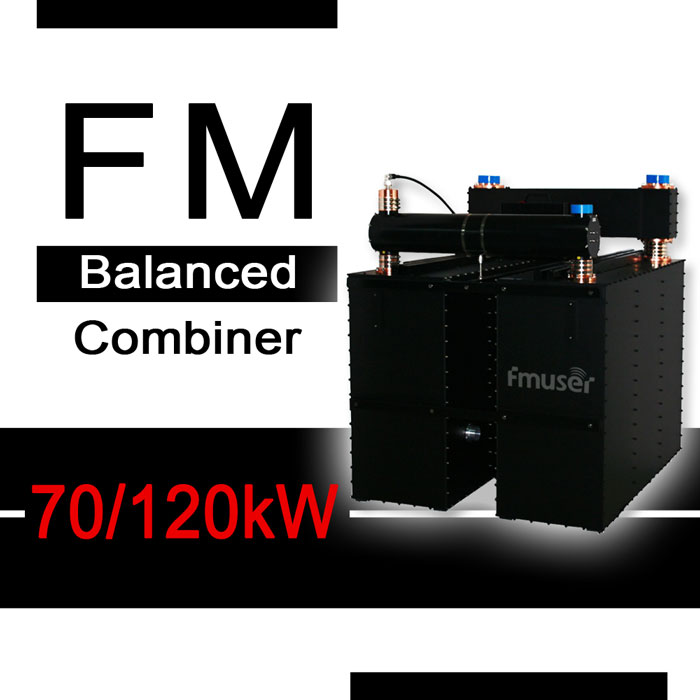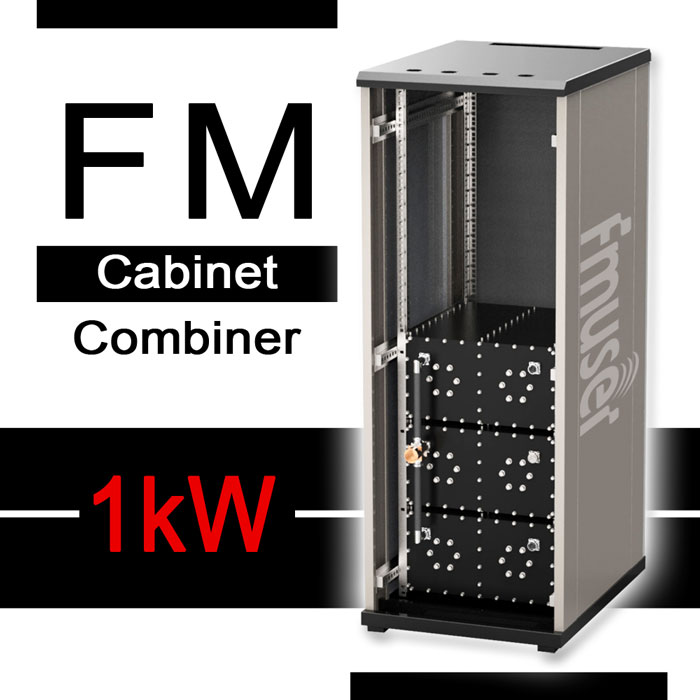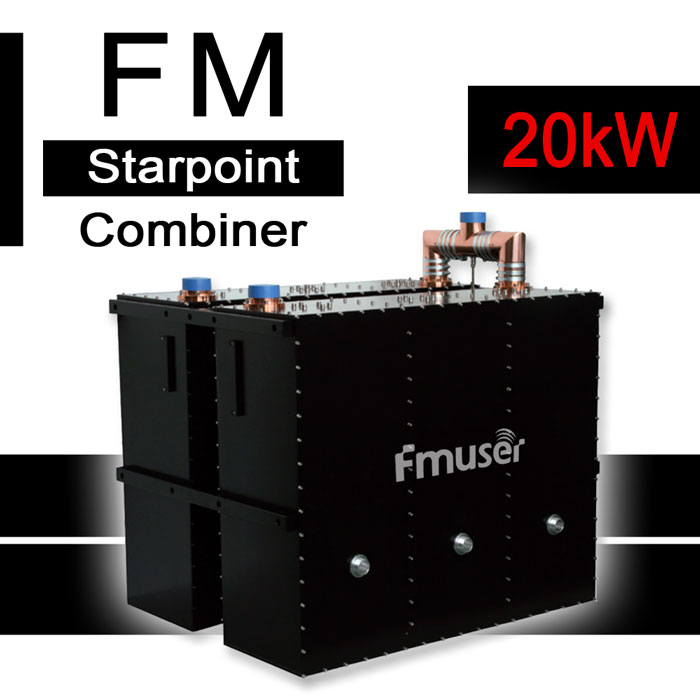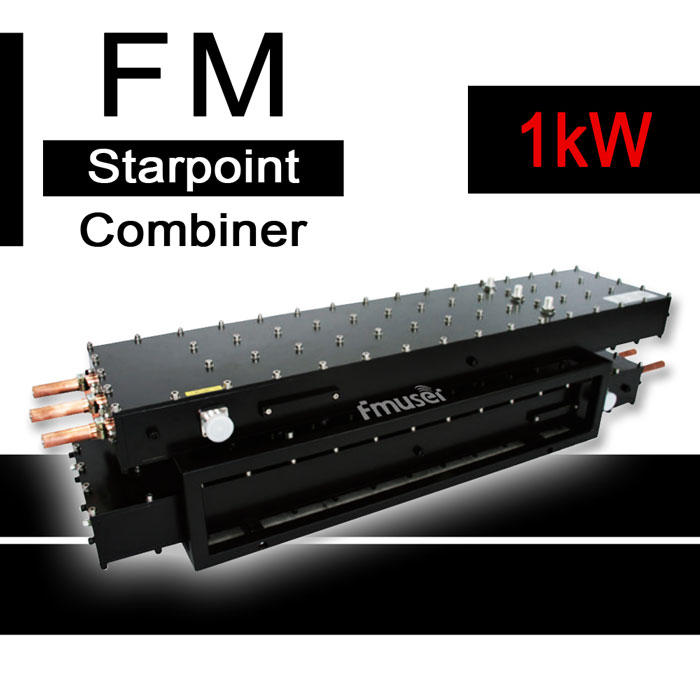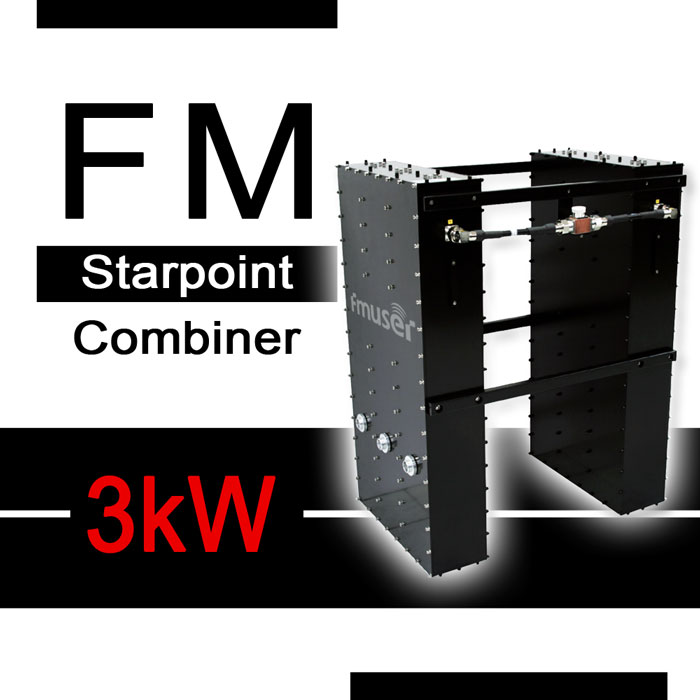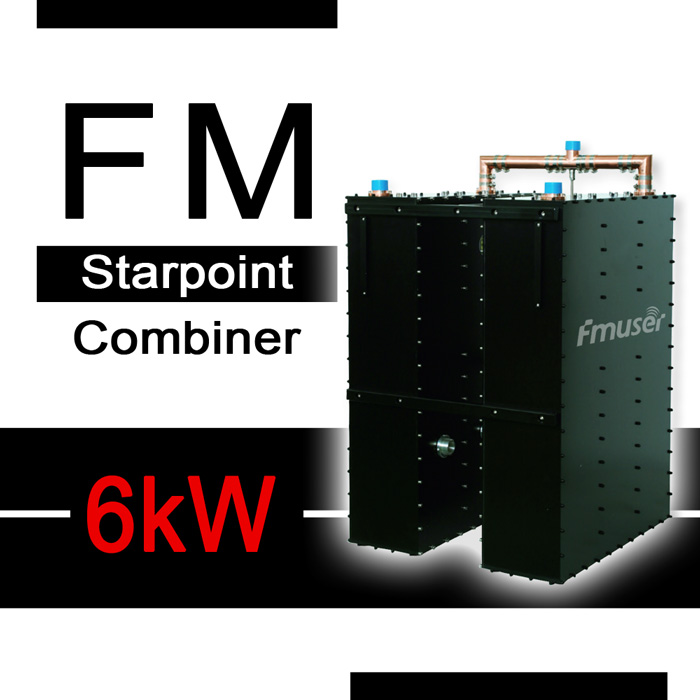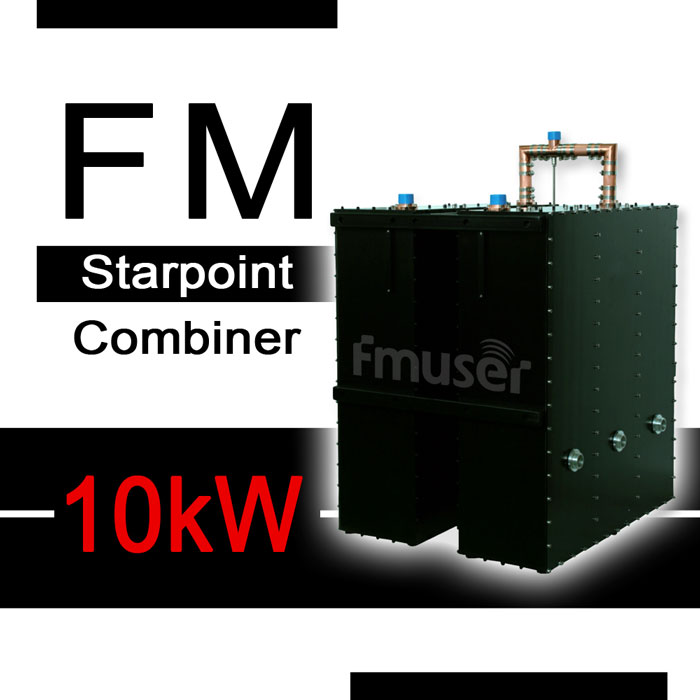
FM Combiners
1. ✨ Optimized RF Connectivity Starts Here!
FM Combiners are mission-critical solutions for broadcasters and telecom professionals needing seamless signal management. At FMUSER, we specialize in high-performance RF systems, ensuring reliable signal combining for industries like radio broadcasting, emergency communications, and more. This page simplifies your search by categorizing FM Combiners based on frequency range, power capacity, and application-specific designs, helping system integrators and businesses quickly pinpoint solutions for multitransmitter setups, signal isolation, or network redundancy.
2. 💡 Key Features: Built for Precision & Scalability!
- Robust Technical Design: Industrial-grade durability, energy-efficient operation, and certifications (CE, FCC).
- Advanced Functionality: Dual-input isolation, harmonic suppression, and remote monitoring compatibility.
- Scalable Solutions: From cost-effective 15W entry-level combiners to 10kW+ industrial systems, tailored for hobbyists, broadcast studios, or large telecom networks.
- Future-Ready: Modular architectures support upgrades like 5G integration or IoT-enabled monitoring.
3. 🚀 Powering Diverse Applications with FMUSER’s Expertise!
Discover how our FM Combiners drive success across industries:
1. FM Broadcasting Networks
- Application: Combine signals from multiple transmitters into a single antenna.
- FMUSER Advantage: Ultra-low insertion loss (<0.5dB) maximizes output power, ensuring compliance with strict FCC regulations.
2. Emergency Communication Systems
- Application: Ensure uninterrupted signals during critical operations.
- FMUSER Advantage: Ruggedized combiner units with EMI shielding for mission-critical reliability.
3. Studio-to-Transmitter Links (STL)
- Application: Maintain pristine audio quality over long-distance links.
- FMUSER Advantage: Wide frequency range (87–108 MHz) and flat frequency response (±1dB).
4. Campus/Community Radio
- Application: Streamline multi-station setups on shared infrastructure.
- FMUSER Advantage: Compact designs with plug-and-play installation for rapid deployment.
4. ✅ Why FMUSER? Your Partner in RF Excellence!
- Factory Direct Savings: Eliminate middlemen—enjoy rates 30% lower than competitors.
- Stock Ready, Ships Fast: Orders dispatched within 24 hours via DHL/UPS.
- Turnkey Support: Pre-configured systems, on-site installation, and 24/7 technical support.
- Customization & OEM: Tailor combiners for unique power/frequency needs.
- Proven Expertise: Trusted by 5000+ clients in commercial radio, public safety, and academia since 2008.
5. 🔍 Smart Buyer’s Guide: Match Perfectly to Your Project!
- Technical Specs: Prioritize frequency stability, isolation levels (>30dB), and power handling.
- Compatibility: Check input/output ports (N-type, DIN) and integration with existing transmitters.
- Budget-Friendly ROI: Balance upfront costs with long-term durability and scalability.
- Future-Proofing: Opt for combiners supporting hybrid analog/digital signals or IoT upgrades.
-
![87-108 MHz 4kW Compact TX RX Systems Duplexer RF Channel Combiner with 3 or 4 Cavities and 7-16 DIN Input for FM Broadcasting]()
Price(USD):Ask for a quotation
Sold:4
-
![87-108 MHz 4kW FM Combiner Solid State Duplexer Balanced CIB FM Transmitter Combiner with 3/4 Cavities for FM Radio Station]()
Price(USD):Ask for a quotation
Sold:4
-
![87-108 MHz 15kW FM Combiner 3 or 4 Cavity Vari Notch Duplexer Solid State FM Transmitter Combiner with 1 5/8" Input for FM Radio]()
Price(USD):Ask for a quotation
Sold:3
-
![87-108 MHz 15kW Compact TX RX Combiner 4 Cavity Duplexer Solid-state FM Transmitter Combiner with 1 5/8" Input for FM Broadcast]()
Price(USD):Ask for a quotation
Sold:7
-
![87-108MHz 40kW Compact RF Power Combiner with 3 1/8" Input Solid-state FM CIB Balanced Duplexer for Signal Combiner Two Antennas]()
Price(USD):Ask for a quotation
Sold:10
-
![87-108 MHz 50kW 3/4 Cavities FM Transmitter Combiner Solid State Duplexer with 3 1/8" Input High Power TX Combiner for FM Radio]()
Price(USD):Ask for a quotation
Sold:10
-
![87-108 MHz 70kW/120 kW FM Combiner High Power Balanced CIB FM Transmitter Combiner 3 Cavity Duplexer for FM Radio Station]()
Price(USD):Ask for a quotation
Sold:4
-
![87-108 MHz 1kW 1 5/8" 2 Cav. N-Channel FM Starpoint Combiner Radio Repeater Duplexer High Power Radio Combiner for FM Station]()
Price(USD):Ask for a quotation
Sold:11
-
![87-108 MHz 2-Way 3 1/8" 20kW Starpoint FM Transmitter Combiner with 3 or 4 Cavities Compact tx rx duplexer for FM Radio Station]()
Price(USD):Ask for a quotation
Sold:3
-
![87-108MHz 7-16 DIN 1kW Starpoint FM Transmitter Combiner Compact 4 Cavity Duplexer with Inner Duplexer Filter for FM Broadcast]()
Price(USD):Ask for a quotation
Sold:13
-
![87-108MHz 7-16 DIN 3kW Branched Type FM Combiner Solid-state 2 Way Starpoint Cavity Duplexer with 3 or 4 Cavity for FM Station]()
Price(USD):Ask for a quotation
Sold:13
-
![87-108MHz 6kW Starpoint FM Combiner 2 way RF Combiner Star Type Radio Duplexer with 1 5/8" Input and 3/4 Cavities for FM Station]()
Price(USD):Ask for a quotation
Sold:4
-
![87-108MHz 10kW 3 or 4-Cavity Starpoint FM Transmitter Combiner Compact 2 Way Cavity Duplexer with 1 5/8" Input for FM Station]()
Price(USD):Ask for a quotation
Sold:7
- What are the applications of FM combiner and what are the most common application?
- FM combiners are used in radio broadcasting systems to combine multiple radio signals of the same frequency onto one transmission line for simultaneous broadcast. One of the most common applications of FM combiners is combining multiple FM radio station signals so that they can be broadcast on the same antenna. Additionally, FM combiners are used to combine the signals of multiple FM radio station transmitters located at different geographic locations to create a single, combined signal that can be broadcast over a wider area.
- How to choose the best FM transmitter combiners? Few suggestions...
- Many customers come to us and ask, "Hey, which types of FM combiners for sale are the most popular ones? What's the price for FMUSER UHF/VHF combiner?", the following contents are about how to choose the best combining system for your broadcast station.
To choose the best FM combiner for a broadcast station, you should consider factors such as the number of transmitters, the available power, the size of the antenna, and the type of antennas used. Additionally, you should also review the specifications of the combiner, such as its maximum frequency, isolation, insertion loss, and other features. It's important to research the reviews of the combiner, as well as the manufacturer's history and customer service. Finally, you should compare prices between different suppliers and select the product that best fits your needs and budget.
You should also pay attention to the following factors:
#1 Copper, silver-plated brass, and high-quality aluminum alloy are better: Dude, if it's about the long-term business of your radio station, whether it's an FM radio station or a national TV station, you don't want it to stop working on the day it starts working due to all sorts of strange reasons. Think about it, I mean, no one wants a heavy machine that costs thousands of dollars and lots of time and effort but can't work continuously? Therefore, when you can choose to have a high-performance combiner made of better materials, such as copper, silver-plated brass, and high-quality aluminum alloy, you should make your decision in time, and FMUSER can provide you with this kind of high-performance professional broadcasting equipment. We have all you want.
#2 You Need a More Professional Combiner: Our technical team received so much feedback like, "God, since our boss bought a 2-way combiner for thousands of dollars from some unknown radio equipment manufacturers, the number of fans of our radio program has plummeted." or "I can't stand that poor combiner anymore!" We will then sincerely suggest to them, "Why not choose a professional multi-channel RF combiner?" In most of our customers' radio stations, there are several FM transmitters or solid-state TV transmitters. At this time, those inferior combiners can't meet the modern needs of multi-channel professional transmission. You need some better equipment. FMUSER happens to cover almost all the professional multi-channel combiners you can find on the market. Let's chat, you will surely find the best one
#3 Enjoy What Your Audience Enjoys: Why not let the audience enjoy a better radio program while you still can. Is your audience really willing to listen to those radio programs full of harsh noise? How to have the ultimate radio program quality has become one of the goals of many of our brand repeat customers. Of course, no matter whether you are a small-town radio station or a national radio station, you don't want to lose your valuable audience. Fortunately, you can start with updating your professional broadcasting equipment, when you can have multi-function radio station equipment with ultra-low distortion, insertion loss, and low VSWR, RF combiner from FMUSER, for example, please do not hesitate. We are very honored to serve you and your audience
#4 Size is just as Important: Generally speaking, the total area of the radio station room won't be as large as the broadcast studio, and there are a lot of necessary broadcasting equipment, such as cabinet-type broadcasting transmitters, feeders, waveguide inflators, etc., which means that your technical team must reasonably arrange a location for the combiner without affecting the work of that expensive equipment, The common combiner may be too large to enter the rack room, which proves that the compact design is one of the important reasons why our RF combiner is still popular in large and medium-sized broadcast stations
#5 The Internal Structure still Needs to be Considered: What kind of broadcasting equipment can be called excellent broadcasting equipment? This is a question worth pondering. Take the combiner as an example. In hundreds of after-sales feedback of our RF combiners sold all over the world, we found some interesting content: more than half of our customers reported that they did not consider the price and appearance the first time when making an inquiry. On the contrary, they were attracted by some details that ordinary people could not pay attention to, For example, when Jack from London showed much interest in one of our broadcast turnkey solutions for his municipal radio station, we provided him with a customized multi-structure 40kw transmitter combiner with three cavities. The biggest feature of this model is its simple structure and convenient multi-frequency integration. In fact, Jack's radio station is one of the most famous in the area, and that 40kw combiner is still serving Jack and his audience since 2014. Of course, this is only one of the excellent after-sales feedback of our RF combiners. Many other customers appraised that our combiner has a small temperature rise, professional redundant power capacity design, power combination, etc. We have the ability and the confidence to provide you with a better broadcast service
- How to correctly use FM combiner in broadcast station?
- Steps to correctly use an FM combiner in a broadcast station include:
1. Check the antenna system for any potential interference sources.
2. Connect the FM combiner to the antenna system.
3. Ensure that all transmitters are properly calibrated and have the correct operating frequency.
4. Connect each transmitter to the FM combiner.
5. Check the frequency offset of each transmitter to ensure it is within the FCC's frequency tolerance requirements.
6. Use the combiner to combine the signals from the various transmitters.
7. Monitor the signal strength of the combined signal and make adjustments as necessary.
Problems to avoid when using an FM combiner include:
1. Poor signal quality due to interference or frequency offset.
2. Overloading the combiner by connecting too many transmitters.
3. Insufficient signal strength due to improper antenna system configuration.
4. Poor reception due to incorrect antenna placement.
5. Incorrectly calibrated transmitters.
- How does FM combiner work in broadcast station?
- FM combiners are used in a broadcast station to combine multiple FM signals into one signal for broadcasting. This is done by combining multiple FM signals into a single output port. The FM combiner acts as a filter to ensure that only the desired signals reach the receiver. It also allows the station to combine multiple signals into one signal, which increases the station's reach and allows them to broadcast to multiple locations.
- Why FM combiner is important and is it necessary for a broadcast station?
- FM combiners are important because they allow multiple FM broadcast stations to operate in the same frequency range without interfering with each other. Having a combiner also allows a broadcast station to reach a larger audience, since all stations in the combiner can be heard by listeners. It is necessary for a broadcast station to have a combiner if they wish to operate in the same frequency range as other stations.
- How many types of FM combiner are there?
- There are three main types of FM combiners: passive, active, and hybrid. Passive combiners simply combine the signals from multiple transmitters and send them out on one antenna. Active combiners are more complex and use active components, like amplifiers and filters, to ensure a higher quality signal. Hybrid combiners combine the features of both passive and active combiners to provide a balance of signal quality and cost.
- How to correctly connect a FM combiner in a broadcast station?
- To correctly connect a FM combiner in a broadcast station, the following steps should be taken:
1. Connect the center conductor of each input line to the center conductor of one of the combiner’s output lines.
2. Connect the shield of each input line to the shield of the same output line.
3. Connect the remaining center conductors of the output lines together.
4. Connect the remaining shields of the output lines together.
5. Connect the output lines to the FM transmitter.
6. Connect the input lines to the FM exciters.
- What are the equipment related to FM combiner in a broadcast station?
- The equipment related to an FM combiner in a broadcast station typically includes: a transmitter, a power amplifier, an antenna system, a broadcast combiner, a duplexer, a band pass filter, an antenna array, a control system, and a tower.
- What are the most important physical and RF specifications of FM combiner
- The most important physical and RF specifications of an FM combiner include its frequency range, insertion loss, return loss, isolation, harmonic rejection, and power handling. Additionally, the combiner should have a low noise figure, good linearity, and a high level of reliability.
- How to correctly maintain a FM combiner in a broadcast station as an engineer?
- To correctly perform daily maintenance of a FM combiner in a broadcast station, the engineer should:
1. Inspect the exterior of the combiner for signs of damage or wear and tear.
2. Check that all connections are secure and intact.
3. Check power levels and make necessary adjustments.
4. Examine the antenna for any signs of damage or corrosion.
5. Check the filters and make sure they are properly aligned and functioning.
6. Inspect the combiner for any signs of interference or distortion.
7. Perform an RF balance to ensure proper operation.
8. Check the output power levels and adjust as needed.
9. Monitor the system for any irregularities or issues.
10. Clean or replace any parts as needed.
- How to correctly repair a FM combiner if it fail working?
- To repair a FM combiner, you will need to first identify what is causing it to fail. If the combiner has blown fuses, you can replace them with new ones. If the combiner is suffering from electrical interference, you can replace the capacitors or use shielding material to reduce the interference. If the combiner has a connection issue, you can check the connections and replace any broken parts. If the combiner has a mechanical issue, you can replace the broken parts. Be sure to get parts that are compatible with the combiner. You may also need to adjust the settings on the combiner to ensure that it is working properly.
- What kind of material is the casing of the FM combiner generally made of?
- The casing of the FM combiner is generally made of metal, such as aluminum or steel, and these materials can affect its performance. Metal materials can reduce interference from outside sources and help protect the internal components from damage. However, if the metal casing is too thick, it can introduce additional losses, reducing the overall efficiency of the combiner.
- What is the basic structure of FM combiner?
- The basic structure of an FM combiner consists of a combiner head (also referred to as the combiner cabinet), a duplexer, a band pass filter, and a power amplifier. The combiner head contains the controlling components such as a control processor, digital-to-analog converters, and other control elements. The duplexer is responsible for separating the transmit and receive signals. The band pass filter is responsible for rejecting unwanted frequencies and selecting the desired frequency range. The power amplifier is responsible for increasing the signal power.
- The combiner head determines the attributes and performance of the FM combiner. If the combiner head is not present, the FM combiner will not be able to work normally. The other components, such as the duplexer, band pass filter, and power amplifier, all need to be connected to the combiner head in order for it to function properly.
- In a broadcast station, who should be assigned to manage FM combiner?
- The person who should be assigned to manage an FM combiner should have a good understanding of signal strength and should possess technical skills and knowledge in order to install, maintain, and troubleshoot the equipment. They should be able to work independently and have strong organizational and communication skills.
- How to choose the right packaging for a FM combiner?
- When choosing the right packaging for an FM combiner, it is important to consider the size, weight, and fragility of the item. It should be packaged in a way that will protect it from impacts, temperature changes, and moisture. Additionally, it should be secured in the packaging in a way that prevents it from shifting or sliding around. When transporting the FM combiner, it is important to make sure that the package is labeled with the correct shipping information and that it is properly sealed to minimize any potential damage.
- How are you?
- I am fine
CONTACT US


FMUSER INTERNATIONAL GROUP LIMITED.
We are always providing our customers with reliable products and considerate services.
If you would like to keep touch with us directly, please go to contact us
